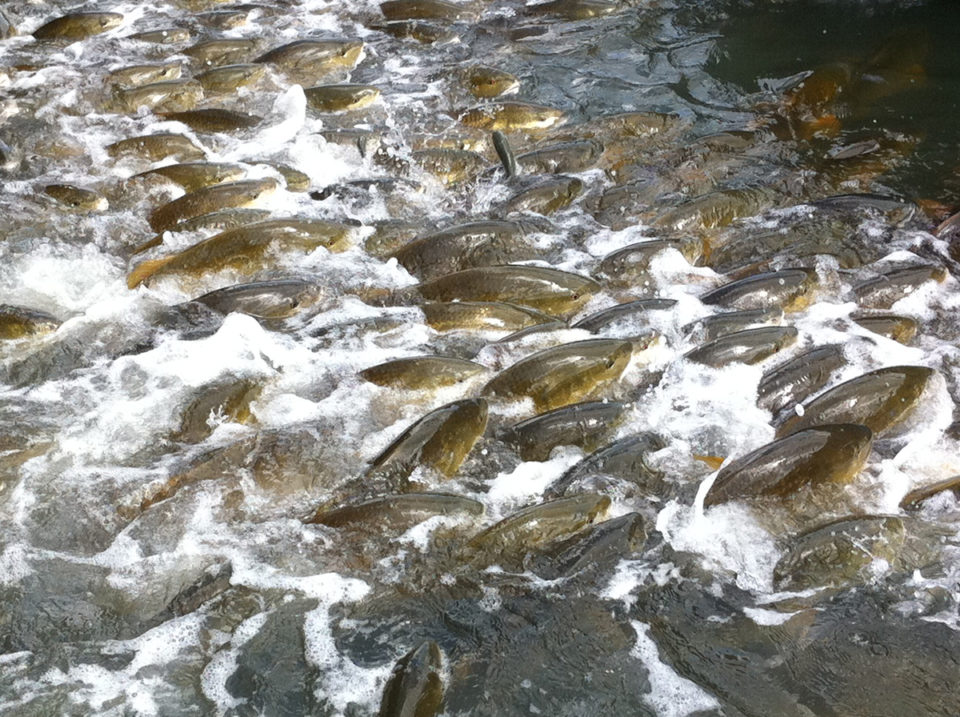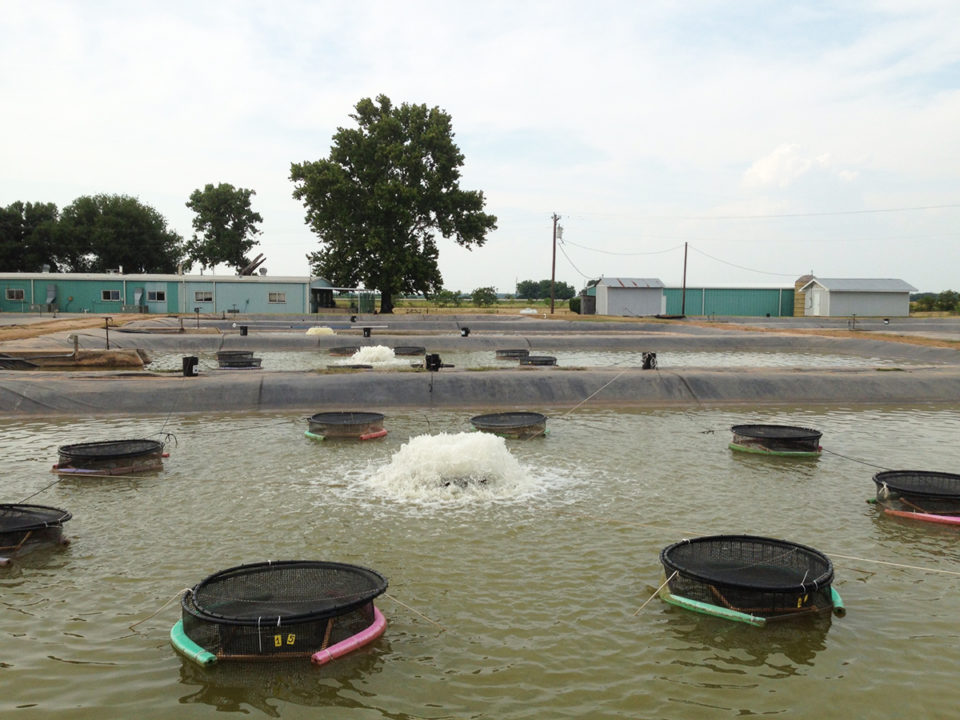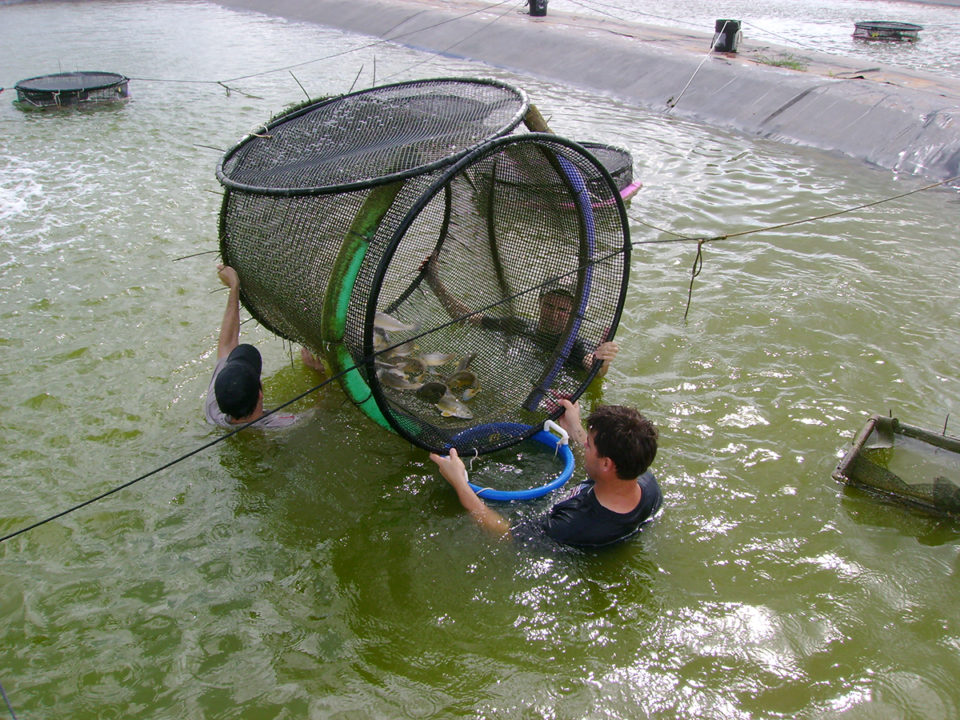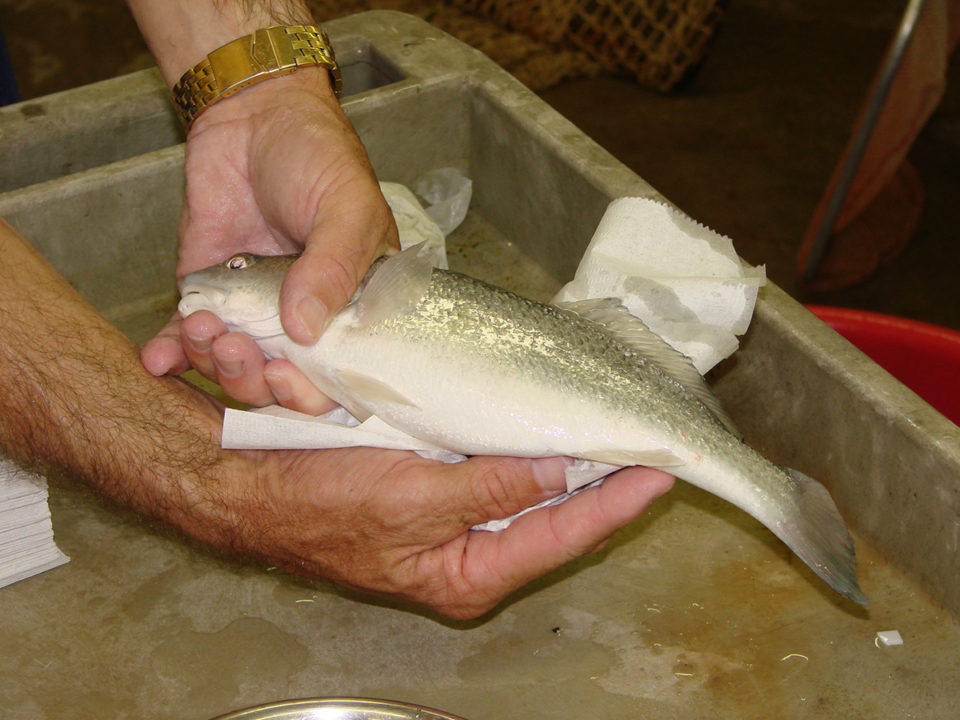Significant replacement of fishmeal possible while supporting production performance, health

The red drum (Sciaenops ocellatus) is a carnivorous and highly prized marine fish. Various studies have evaluated plant-based diets for the species and have demonstrated that it can tolerate relatively high dietary levels of plant feedstuffs without displaying negative effects on production performance.
However, these studies were restricted to early stage juveniles. Because the response to plant-based diets can be growth-stage specific, plant-based diets must be also be evaluated in larger fish. Soybean meal (SBM) is the foremost feedstuff substituting for fishmeal (FM) in aquafeeds. However, different degrees of tolerance to dietary SBM have been reported in a range of aquacultured fish species, largely attributed to the presence of anti-nutritional factors (ANFs).
Soy-protein concentrate (SPC) is an example of a highly refined soybean product (SP) with relatively higher protein content and lower levels of ANFs compared to commodity SBM, but high processing costs may limit its inclusion in aquafeeds. Novel SPs – from the selective breeding of non-genetically modified (non-GM) soybean varieties – are now available that have higher protein content and lower levels of ANFs, so these new ingredients may be more cost-effective for use in plant-based diets for aquacultured species.
This article summarizes the original publication (http://dx.doi.org/10.1016/j.aquaculture.2015.03.012) of a study we conducted to evaluate the performance and health status of advanced juvenile red drum in response to the replacement of dietary fishmeal with two SPs (conventional SBM or a novel SP), and to the supplementation of a yeast-based prebiotic in a SBM-based diet. The study was conducted in cages suspended in aquaculture ponds to allow the use of larger fish than used in previous studies, and to incorporate the variable conditions of the pond environment. This research was funded in part by a grant from the National Oceanic and Atmospheric Administration under the Sea Grant Aquaculture Research Grant Program (NA100AR4170099).
Study setup
To evaluate the replacement of fishmeal with SPs in the diet of red drum, a 15-week feeding trial was carried out. The SPs evaluated included SBM and N-3010 (a commercial SP produced from non-GM, selectively bred soybean varieties).
Red drum were obtained from the Sea Center Texas Marine Aquarium, Fish Hatchery and Nature Center operated by Texas Parks and Wildlife Department in Lake Jackson, Texas, and transported to the Texas A&M Aquacultural Research and Teaching Facility. The animals were cultured in an indoor, recirculating facility until they reached over 60 grams mean weight.

Then, 30 red drum juveniles [mean initial weight ± standard deviation (SD) = 68 ± 5.1 grams] were stocked into each of 16, 1-cubic meter floating-cages divided equally between two, 0.05-hectare, rubber-lined ponds. Each pond had continuous mechanical aeration and well water was added as necessary to cope with evaporation. Salinity was maintained at 5.8 ± 0.26 g/L. In each cage, red drum were fed their assigned diet for a few days until active feeding was observed, then fish in each cage were group weighed for the start of the feeding trial. Fish samples were collected before and after the study for various analyzes.
Fish in each cage were fed their assigned diet once daily to apparent satiation during the entire feeding trial (15 weeks). Two cages in each pond were assigned either the reference diet (REF) or a test diet, resulting in a generalized randomized block design with four replicate cages per dietary treatment.
All diets were manufactured at the U.S. Fish and Wildlife Service, Bozeman Fish Technology Center – Fish Feed Laboratory (Bozeman, Montana), and were formulated to contain 35 percent digestible protein (DP), 12 percent lipid, and an estimated digestible energy level of 350 kcal/100 grams. The REF diet had 71 percent of the DP provided from FM, and the remaining DP from corn protein concentrate. Two test diets (SBM and N-3010) were formulated to replace approximately 72 percent of the DP from FM in the REF diet with SBM or N-3010. An additional inclusion of SPC to the test diets resulted in a total of 86 percent replacement of DP from FM compared to the REF diet.
A third test diet (SBM + GBA) – to evaluate the potential additive effect of a commercial yeast-based prebiotic (GroBiotic®-A; GBA) on the overall performance of red drum – was formulated identically to the SBM diet with the addition of GBA at 2.0 percent, at the expense of the same amount of wheat flour.
All diets were supplemented with mineral and vitamin premixes to meet or exceed the established requirements for red drum, along with the supplementation of taurine (1.0 or 1.5 percent).
For detailed descriptions on the experimental diets used (including ingredients, formulation and manufacturing); the fish and feeding trial; data acquisition and analyzes; calculations and statistical analyses; and references, please contact the first and third authors.

Results and discussion
Our results showed that both SBM and the commercial product N-3010 can partially substitute for FM in the diet of advanced juvenile red drum. In general, the production performance and health status of the red drum were not affected by the high dietary levels of SBM or N-3010 in combination with SPC, replacing 86 percent of the DP from FM in the REF diet.
The fish promptly acclimated to the cages and were feeding readily within a couple days after stocking. Results revealed significant dietary effects on condition indices and whole-body ash of red drum. Hepatosomatic index (HSI) and intraperitoneal fat (IPF) of fish fed the REF diet were significantly lower relative to those fed the SBM or N-3010 diet, while whole-body ash content was significantly higher in fish fed the REF diet. On the other hand, despite contrasting differences in protein raw material composition between the SP-based diets and the REF diet, all dietary treatments supported similar (P>0.05) production performance, protein retention efficiency, and non-specific immunological responses of red drum after 15 weeks of feeding (Table 1).
Rossi, red drum, Table 1
| Treatment | Survival (%) | Final weight (g) | Feed efficiency ratio | Protein retention efficiency (%) | Plasma lysozyme (unit/mL) | Whole-blood NBT test (mg/mL) | HK-ECSA (mol 02-) |
|---|
Treatment | Survival (%) | Final weight (g) | Feed efficiency ratio | Protein retention efficiency (%) | Plasma lysozyme (unit/mL) | Whole-blood NBT test (mg/mL) | HK-ECSA (mol 02-) |
|---|---|---|---|---|---|---|---|
| REF | 98.3 | 245.1 | 0.56 | 27.3 | 241.7 | 9.9 | 2.2 |
| SBM | 97.5 | 247.9 | 0.57 | 28.0 | 242.2 | 9.5 | 2.7 |
| SBM + GBA | 99.2 | 237.8 | 0.56 | 25.0 | 262.1 | 9.7 | 2.3 |
| N-3010 | 95.0 | 246.7 | 0.53 | 25.1 | 242.0 | 9.3 | 2.8 |
| Anova (Pr>F) | 0.22 | 0.655 | 0.452 | 0.245 | 0.656 | 0.891 | 0.577 |
Furthermore, no significant differences in the micromorphology (fold height, enterocyte height, and microvilli height) of anterior, middle, or posterior sections of the red drum intestine were found among treatments. This showed that there were no apparent alterations in the intestinal structure of red drum fed diets predominantly composed of SP for a prolonged time.

As expected, the 15-week feeding trial was not long enough for red drum to attain a typical market size (0.5–1.0 kg), but it was long enough to validate the nutritional value of the experimental diets as a minimum of three-fold increase in size was observed in all treatments, which is acceptable for nutrition studies using advanced juveniles. A longer time period was not possible as colder water temperatures in the fall would limit fish growth.
Advanced juvenile red drum appears to exhibit a higher tolerance to soybean-based diets than younger ones. In contrast to earlier studies, the overall performance of our advanced juvenile (68 grams initial weight) fed soybean-based diets was unaffected in this study. These results highlight the importance of evaluating alternative ingredients for FM at different growth stages to optimize the use of plant-based formulations.
Beneficial effects from prebiotic supplementation in fish diets have been demonstrated in an ever-increasing number of studies. However, there were no effects resulting from GBA supplementation in any of the various response variables measured in this study.
As with other carnivorous fish including Atlantic cod, cobia and hybrid striped bass, the soybean-based diets evaluated in the current study did not promote any adverse effects on the integrity of red drums’ intestine, which is in close agreement with previous studies reporting only minor alterations. Such evidences contrast with what has been found in salmonids, but corroborates to the evidence of red drum’s higher tolerance to SP.
Perspectives
Based on results from our study, the combination of SBM or N-3010 with SPC was effective at reducing fishmeal dietary component from 44.6 to 6.0 percent, while supporting similar production performance and health status of advanced juvenile red drum raised in floating cages.
Authors
-
Waldemar Rossi Jr., Ph.D.
Assistant Research Professor
Aquaculture Research Center
Kentucky State University
103 Athletic Dr., Frankfort, KY 40601 USA -
Joseph R. Tomasso, Ph.D.
Director and Professor
School of Fisheries, Aquaculture and Aquatic Sciences
203B Swingle Hall
Auburn University,
Auburn, AL 36849 USA -
Delbert M. Gatlin III, Ph.D.
Regents Professor and Associate Department Head for Research and Graduate Programs
Department of Wildlife and Fisheries Sciences
280 Wildlife, Fisheries, and Ecological Sciences Bldg. (WFES)
Texas A&M University System
College Station, TX 77843-2258 USA
Tagged With
Related Posts

Innovation & Investment
Aquaculture Exchange: Daniel Benetti
University of Miami professor says the U.S. seafood marketplace needs to embrace 'plate-sized' fish if a domestic aquaculture industry is to become sustainable and profitable.

Responsibility
Assessing the carbon footprint of aquaculture
A carbon footprint is an estimate of the total carbon emissions resulting from the production, use and disposal of a product or service. Carbon footprints for aquaculture products result mainly from the use of manufactured feed and mechanical aeration.

Aquafeeds
It takes guts to advance sustainability in aquaculture
With byproducts representing between 25 to 50 percent of the weight of various fish species, we need to be looking at how the entire fish is being used: even the heads, guts and skin.

Health & Welfare
Soy products replace fishmeal in offshore cobia feed study
A project of the Soy-in-Aquaculture program evaluated the feasibility of using soy protein concentrate and soybean meal to replace fishmeal in cobia diets.


